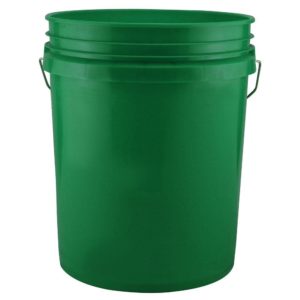Not all “Green” Issues are Created Equal
While it’s tempting to toss all environmental issues into the same “green bucket”, that can add to the confusion. Recycling, saving sea turtles, and combating climate change may all be compelling, but have little in common.
If we are going to find solutions to big challenges, we need to connect efforts that are targeted to the problem at hand, and not be distracted by other issues that are disconnected, even if they are equally pressing. To frame, communicate and conceptualize clearly, I find it helpful to separate environmental issues into these five well defined categories.
1. Animal / Plant / Ecological Issues – the prototype green issues. Even this huge category might be further divided from animals, marine mammals, pets, forests, ecosystems, the entire food chain, diseases, etc.
2. Material and resource conservation, recycling, waste reduction also covers a very wide range from simple waste reduction to the use of recycled paper to more efficient manufacturing, packaging, etc
3. Energy related from method of production to reduction of “greenhouse gases” (GHG) and basic conservation of energy use
4. Climate Change related from direct effects of the warming, to abnormal and extreme weather, increased wildfires, ocean acidification, decline of coral reefs, melting glaciers.
5. Rising Sea Level is obviously a part of the climate change category, but deserves to be segregated I believe. Because the rising sea will move shorelines inland rather permanently it poses a special and unambiguous economic danger and helps to get the attention of many who might dismiss broader environmental issues. (See “Is Rising Sea Level An Environmental Issue?“)
These distinctions can help avoid erroneous connections or correlations. For example, using recycled paper has effectively nothing to do with slowing climate change. The reason is that paper recycling is energy inefficient. The sorting and transporting typically uses more energy compared to planting fast growing tree species close to a paper mill. Since it is the energy use and production of greenhouse gases that is the primary cause of climate change (a/k/a global warming) there is no way that we can recycle our way out of climate change.
As one more example of a misunderstood connection, consider rising sea level and the energy / greenhouse gas issues. It is true that the human caused high levels of greenhouse gases like carbon dioxide are responsible for the abnormal warming that is melting the glaciers and ice sheets and raising sea level. But even if the world went to 100% renewable energy immediately, we would still have many feet of higher sea level over the coming century. It is already unstoppable. The problem is that the level of greenhouse gases (carbon dioxide, etc), the warming ocean and the melting ice are connected, but with a long lag time for adjustment. The reason is that most of the excess heat has been stored in the ocean. Reducing carbon dioxide emissions now, will take a very long time to result in a cooler ocean — similar to the way that an outdoor swimming pool stays warm for days, even after the weather turns cooler.
We must work to deal with the energy issues to slow the warming, the melting, and the rising ocean. If we don’t the accelerating rate of sea level rise will become catastrophic.Thus we need to see the connection of those two issues, but the distinction. Unfortunately many people and local governments ignorantly or wishfully put their focus into solar panels, bike paths, and electric vehicles as if that will stop the oceans from rising.
There are some things across the categories that are strongly connected. For example, the burning of fossil fuels (#3 Energy) has raised the level of carbon dioxide to more than 400 PPM (parts per million), 40% higher than in millions of years. That has directly warmed the planet correlating with the explosion of massive wildfires devastating forests (#1 Ecological). The elevated level of greenhouse gases, is also causing a decrease in the pH or acidity of the ocean (#4 a climate change effect) that is already having a huge impact on shellfish such as oysters (#1, an ecological / biological issue.) Those cross category connections are valid.
There are many different types of environmental problems, requiring different types of solutions. To solve our most challenging problems, we need to have clarity and apply the right solutions for the problem.

